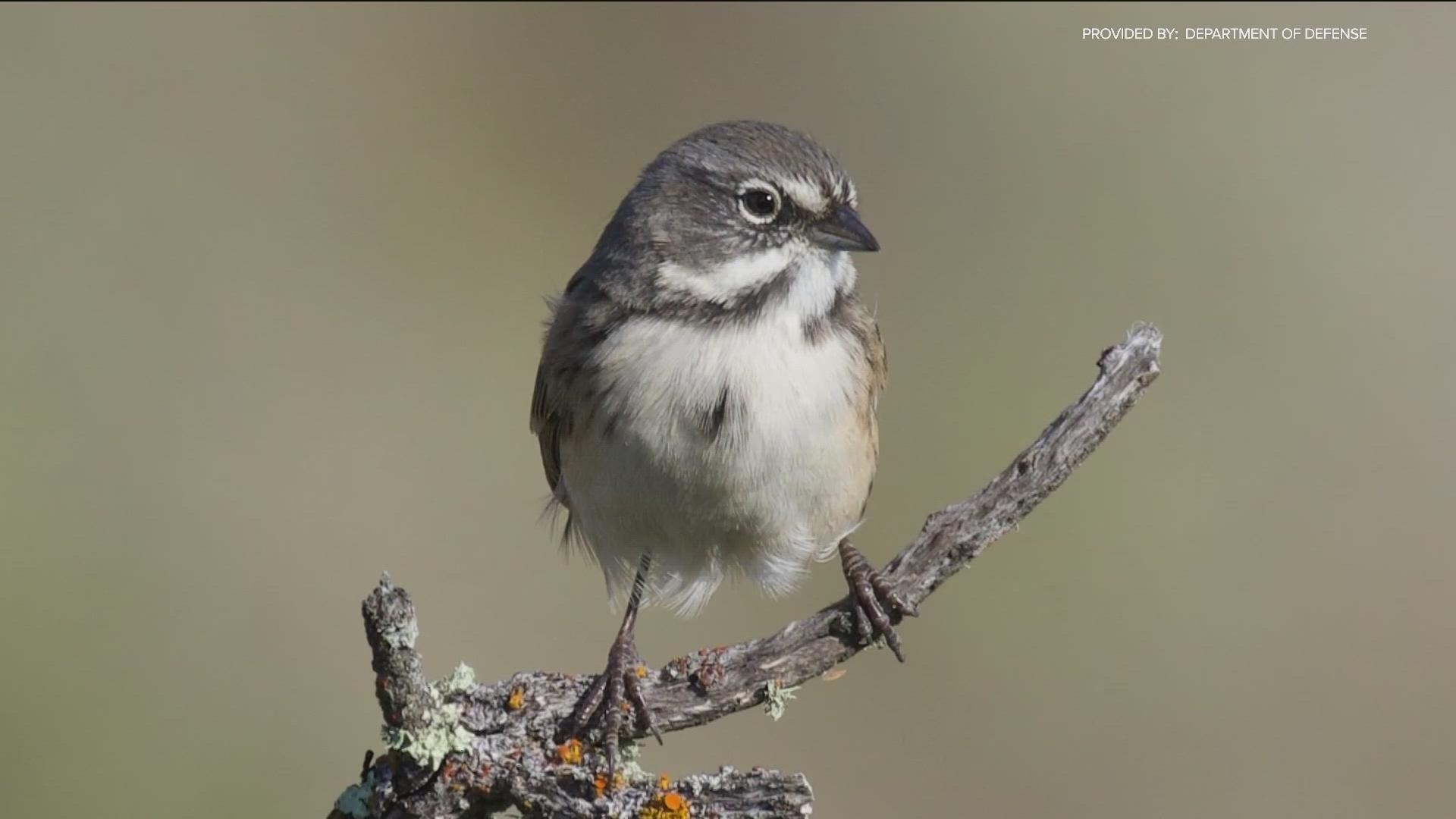LOS ANGELES COUNTY, Calif. — Five species are no longer considered endangered on San Clemente Island, a small remote island off the San Diego, California coastline.
The announcement Tuesday comes after decades-long conservation efforts between the U.S. Navy and U.S. Fish and Wildlife Service.
The species, 4 plants and one bird, have fully recovered and no longer require Endangered Species Act protection:
- San Clemente Island paintbrush
- San Clemente Island lotus
- San Clemente Island larkspur
- San Clemente Island bush-mallow plants
- San Clemente Bell’s sparrow
The celebration took place at an event on Naval Base Coronado to celebrate the partnership and collaboration that led to the success.
“The recoveries we celebrate today in this unique place demonstrate what is possible when partners work together under the Endangered Species Act,” said Service Director Martha Williams of the announcement.
“The Navy is proud to have shared more than 40 years of collaboration with the U.S. Fish and Wildlife Service to improve the habitat and recover these species,” said Karnig Ohannessian, Deputy Assistant Secretary of the Navy for Environment and Mission Readiness.
The delisting of the five species arrives as the Endangered Species Act turns 50 years old in 2023. Throughout the year, the Department of the Interior will celebrate the importance of the ESA in preventing the extinction of imperiled species, promoting the recovery of wildlife and conserving the habitats upon which they depend. The ESA has been highly effective and credited with saving 99% of listed species from extinction, according to the release by U.S. Fish and Wildlife Service.
“The successful recovery and delisting of the five species is another milestone in restoring the health of the natural environment across the Channel Islands, as well as a milestone for the Endangered Species Act which is celebrating its 50th anniversary this year,” said Sandy Vissman, San Clemente Island Coordinator with the U.S. Fish & Wildlife Service.
San Clemente Island is one of eight islands that comprise the Channel Islands off the coast of Southern California. Today’s successful recovery of four plants and one bird adds to the list of species that have now successfully recovered across the islands, including the island night lizard, island fox, and the Santa Cruz Island dudleya and island bedstraw. Bald eagle and peregrine falcon populations decimated by impacts from DDT have also rebounded nationally and are successfully breeding on the Channel Islands.
San Clemente Island is the primary maritime training area for the Navy Pacific Fleet and Sea, Air and Land Forces. Before the island was transferred to the Navy, intensive grazing by nonnative herbivores largely denuded it of its habitat, causing declines in numerous native plants and animals.
The Navy placed a priority on removing all non-native herbivores from the island, allowing the habitat to recover. What was once a largely barren landscape now supports numerous endemic species of plants and animals, including the five species being removed from the federal lists of threatened and endangered species.
WATCH RELATED: Kaja, a critically endangered Sumatran orangutan, celebrates 1st birthday at San Diego Zoo:

